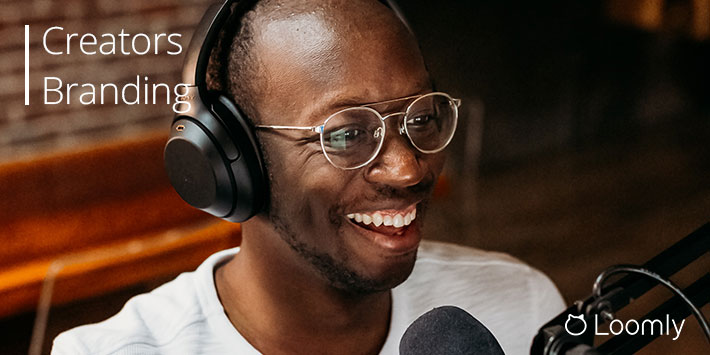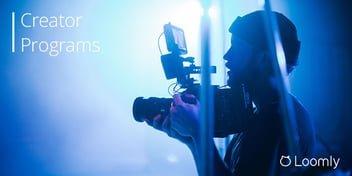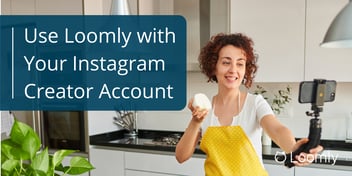Are you one of the young Americans who wants to be a social media influencer? That’s what 86% of 18-38-year-olds said they wanted.
With over 50 million creators across different channels, today is the best time to be a creator and earn a living.
Yes, you CAN get paid doing what you love. In fact, creators who brand themselves strategically from the beginning can build a huge empire founded on their passion.
But how exactly can you fulfill these dreams?
The answer to this question is not that complex. With the right processes and tools, you can bring your dreams to life. And that’s exactly what you’ll discover in this guide.
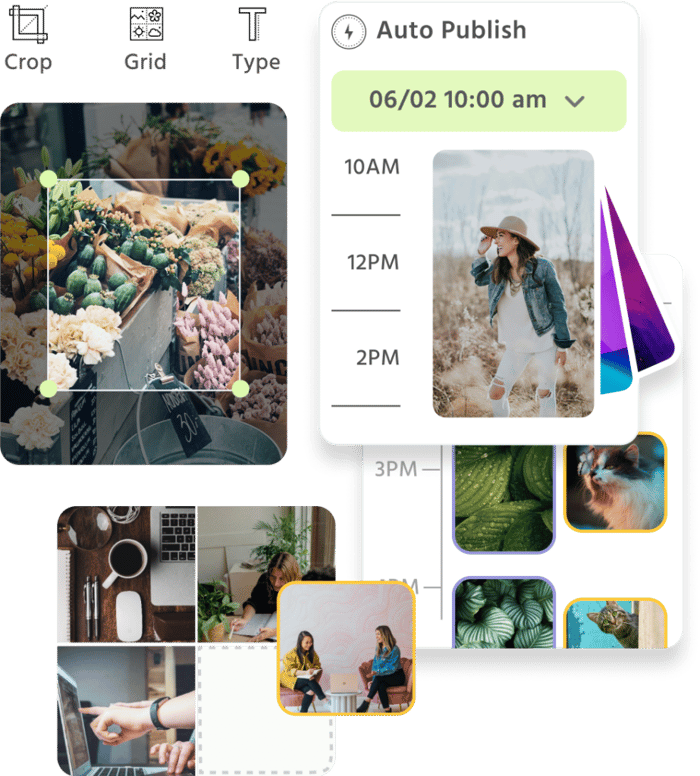
Manage all your social media accounts in one place.
Craft, schedule, & auto-post content to all your social channels, then track analytics and manage interactions from a single, easy-to-use dashboard.
What (or Who) is a Creator?
A creator is someone who develops original content for digital media and whose primary source of income comes through content creation. Their main goal is to find and grow an audience, provide value to them, and ultimately monetize their audience’s attention.
However, the role of a creator is so vast that it’s almost impossible to go off one definition. According to Facebook, creators are entities (individuals or companies) who build communities by producing creative content.
On the other hand, according to investor Li Jin, a creator is “anyone who has built up an audience on digital platforms.”
What is your definition of a "creator"? (as in, creator tools, creator economy, etc)
I'll take a stab: A creator is anyone who has built up an audience on digital platforms. Doesn't need to be creating content per se; can be a community organizer.
— Li Jin (@ljin18) November 20, 2019
The ambiguity of the term shows the evolving nature of the creator economy.
An Overview of the Creator Economy
With the onset of the “Second Renaissance“, there’s an increase in the competition among platforms to provide the best payment structure for creators. As Jack Conte, CEO of Patreon, says:
“It’s so much more accessible and better to be a creator now than it was 10 years ago.”
The Numbers
Let’s look at some of the mind-blowing stats surrounding the creator economy:
- VC firm SignalFire reports that the present creator economy comprises more than 50 million creators.
- Out of these 50 million creators, around 2 million are full-time professional creators.
- Five hundred thousand accounts on Instagram have more than 100K followers.
- Influencer marketing is worth $8 billion, with a projected growth of $15 billion by 2022.
- Over 450,000 creators are present on OnlyFans.
- According to a Teachable report, the revenue earned by creators crossed $1 billion in sales, with creators earning $400 million in 2020 alone.
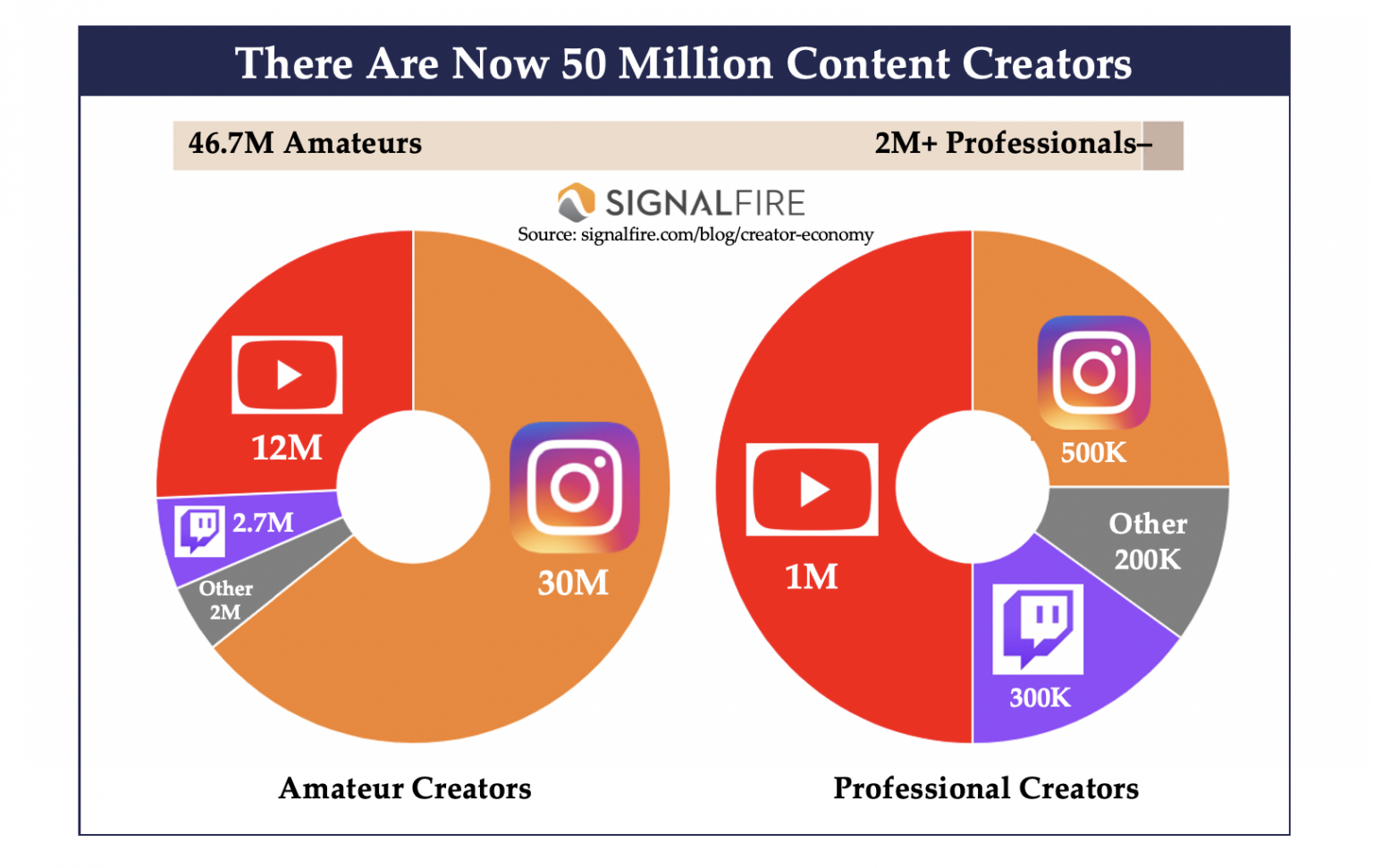
Source: SignalFire
Platforms
With over 4.33 billion users, social media platforms are ideal for creators to reach their target audience:
- Images: Instagram, Snapchat, Pinterest, Tumblr
- Audio: Clubhouse, iTunes, Spotify, Soundcloud
- Video: YouTube, Twitch, TikTok, Instagram, Vine, OnlyFans
- Writing: Twitter, Quora, Medium, Substack
Re:Create published a report in 2019 with the estimated income of U.S. creators through various platforms. While the data is from 2017, it reveals an interesting analysis of the creator economy trends:
- YouTube – $4,004,000,000
- Etsy – $1,458,513,952
- Instagram – $460,100,000
- WordPress – $347,737,771
- Amazon Publishing – $220,447,368
- Tumblr – $178,003,586
- Twitch – $87,147,723
- eBay – $36,974,301
- Shapeways – $1,701,804
Tools
The “second renaissance” allows artists to make their dreams a reality. With phones replacing big production budgets of movies and drones replacing helicopters to save millions of dollars, there are a plethora of tools for creators to use.
Tools for research and planning
Content research and planning are the foundation of content creation:
- Loomly for content organization and ideas
- Google Trends to understand what your audience is talking about
- Answer the Public to know what your audience is searching for
- Semrush Keyword Overview to understand the search intent of your audience
Tools for visual content
Be it editing an Instagram picture or creating an infographic, here are some tools to help you create your visual content:
- Canva to create a variety of visuals – from social media posts to infographics to video thumbnails
- Giphy to create your GIFs
- Piktochart for creating infographics
- Pixlr for editing pictures
Tools for audio content
Audio content has seen an upward trajectory in terms of growth for the past few years. Some tools to help you include:
- Garageband or Audacity for recording and editing audio
- Anchor for creating and distributing podcasts
- Alitu for editing your audio material and podcasts
- Buzzsprout for hosting tracking the performance of podcasts
Tools for video content
Bite-sized and short-form videos provide an unparalleled reach that you can’t afford to miss out on. Some tools to help you with your video content creation include:
- Animoto for creating videos
- Final Cut Pro for editing videos
- Biteable for creating bite-sized social media videos
- Descript for recording, editing, and mastering videos
Resources
As a creator, it’s essential to master your craft. Here are some resources to help you learn and grow:
- Loomly blog
- YouTube Creator Academy
- Facebook for Creators
- Clubhouse Creator First Accelerator Program
- The Clever Copywriting School
- Content Marketing University
Most popular content creators
According to Hugo Amsellem, an expert on the creator economy, the best creators are:
- Colin and Samir on YouTube
- Ian Borthwick on Podcast
- Tejas Hullur on TikTok
- Rex Woodbury on Twitter
The best Creator Economy creators I know on each platforms:
– @ColinandSamir on YouTube
– @ianrborthwick on Podcast
– @tejashullur on TikTok
– @rex_woodbury on Twitter1. You should all collab!
2. Who are your favorites?— Hugo Amsellem (@HugoAmsellem) June 8, 2021
However, the most popular creators based on numbers are:
- PewDiePie on YouTube
- Charli d’Amelio on TikTok
- Kylie Jenner on Instagram and Twitter
- Philip DeFranco on Patreon
How to Build Your Brand, as a Creator
With the rise of the passion economy, creators play the role of an artist and a founder. As a creator, you have to try and scale your brand, as well as creating content.
Also, instead of trying to be the best at everything, you have to build a team of exceptional people around you.
Follow this four-step framework to fulfill your dreams of building a brand doing what you love:
- Grab your audience’s attention
- Nurture the relationship and gain trust
- Expand the business
- Give ownership to your audience
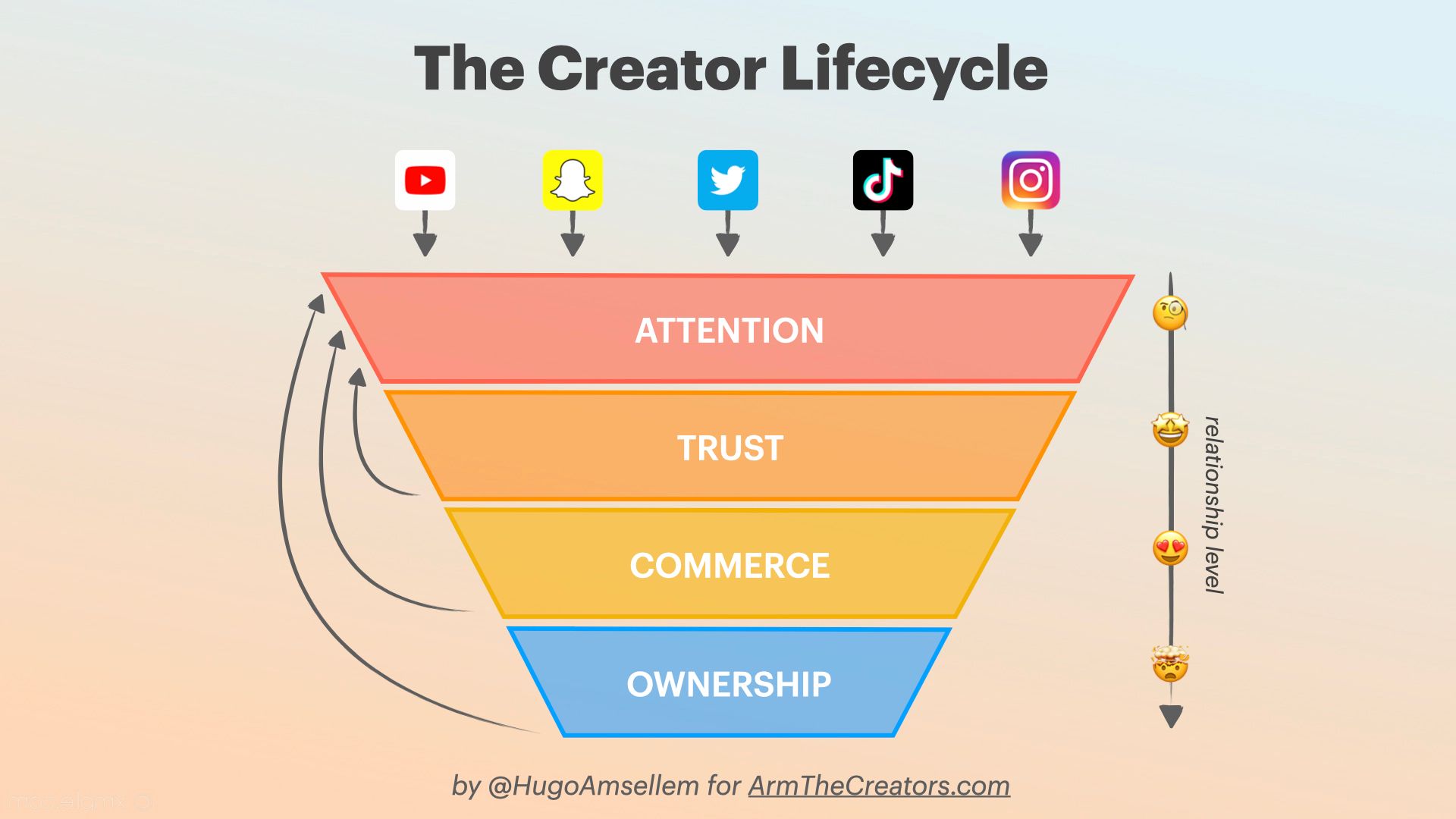
Source: ArmTheCreators
1. Grab your audience’s attention
The audience-creator relationship begins with attention: a popular tweet, an attention-grabbing YouTube thumbnail, or an Instagram reel going viral. Here, you’re at the top of your funnel as a creator, where your aim should be to develop quality content consistently.
The more you create, the higher your chances of reaching more people.
Although you have to rely on the algorithm of third-party applications, it remains the best way to reach a broad audience.
How to monetize
At this stage, your primary source of revenue is ads, be it mid-roll ads on YouTube videos or brand deals and sponsorships. Essentially, you promote someone else’s brand in front of your audience to earn money.
The more attention you have, the higher you can get paid.
KPIs to track
You can track your progress based on the following KPIs:
- Content engagement and growth: Views generated per piece of content, engagement (likes and comments), average watch time, and the number of followers gained.
- Cash flow and business development: The number of brands reaching out to you, pay per deal, and revenue through ads.
Both of these elements are correlated and depend on one thing – the amount of attention you have. Hence, your plan of action must include a strategy to maximize it.
2. Nurture relationships and gain trust
Your actions, words, and interactions with the audience slowly establish trust with them. Your goal here is to increase your reach while retaining and nurturing your existing audience.
According to The Technium, you need only ‘1000 true fans’ to purchase every product you create. And the second stage is precisely for this – to nurture those 1000 true fans.
This stage is one of the most important as you’ll need to shift to direct communication channels and ultimately eliminate third-party platforms.
Aim to build and maintain an email list and private communities with special perks. You are indirectly building a database of your audience, which will be useful in the next step.
How to monetize
From this step onwards, you are monetizing yourself and the brand you build. People will pay to get closer and more personal access to you and your community. There are two ways to do this:
- Scalable activities, like paid communities, tips, and extra perks for members.
- Non-scalable activities, like one-on-one chats and custom videos.
By creating direct contact with your audience, you are protecting yourself from future algorithmic changes. For example, in the past, Facebook changed its algorithm, which drastically reduced the organic reach of creators.
KPIs to track
Two factors to track here are:
- Activation: The number of people signed up for your offer
- Retention: The number of people renewing the offer
For example, if you maintain an email list, the KPIs should include the open rate, click-through rate, and unsubscribe rate.
3. Expand the business
In the third stage, you transition from being an artist to being a business owner when you monetize the attention in the truest sense.
After building enough trust and attracting your ‘true fans’, they will be more inclined to buy most of the products you create rather than the ones you promote of other brands.
How to monetize
The monetization in this step is a no-brainer. You have to create a product that you can sell at scale, such as your merchandise, an apparel brand, training courses, or exclusive content.
With the progress of ecommerce, it’s not as challenging to create and sell your own products as before. Moreover, you don’t even need to own an inventory to sell your products.
For example, you can create designs through 99designs and use simple services like Printify to create and drop ship the products. Even the cosmetics giant Kylie Jenner doesn’t own an inventory.
KPIs to track
The KPIs you have to track here are just like any other business:
- Customer acquisition cost
- Revenue per customer
- Number of purchases per customer
4. Give ownership to your audience
Even if you have established trust, created products, and have a positive cash flow, it’s not time to stop. Next comes the most exciting part of the process when you turn your business into an empire.
The most engaging way for your audience to be a part of your journey is to share your financial gains or invest in your brand.
One possible way of doing this is by allowing your audience to have “skin in the game” and have a sense of ownership by involving them in the process. Giving your audience the assurance that they are not just buying a product but investing in you allows them to be a part of something bigger.
How to monetize
You can do this in various ways:
- Social tokens
- Investment in your company
- Abstractions of digital artworks or non-fungible tokens (NFTs).
KPIs to track
Your audience is investing in YOU – you’re the asset here. So, the metric to track becomes easy.
The valuation of the monetization depends on your net worth and your perceived value.
For example, Grimes sold digital art worth $6 million as NFTs. The artwork “Everydays: The First 5000 Days” by Beeple is the most expensive NFT sold to date, at $69 million.
Creators Branding, in a Nutshell
The statistics of the creator economy make it clear that today’s audience doesn’t necessarily want ad banners to make a purchase. Instead, they prefer to get approval from their trusted creators.
As a creator, you can grow your brand with this four-step framework:
- Grab your audience’s attention
- Nurture relationships and gain trust
- Expand the business
- Give ownership to your audience
As a brand marketer, realizing this shift in consumer behavior can make it extremely easy to market something. The right content creator or influencer can help your brand reach its target audience with better personalization and help build quality relationships.
However, failing to adapt to this evolution could be a massive loss for your brand.
Creators hold a powerful influence over their audience. After all, they’ve invested a lot of time in creating and nurturing their relationships. Instead of being overshadowed by it, you can leverage a creator’s unique brand to keep your brand relevant.
Over time, even when a creator has an established brand, they may be interested in co-branding and collaboration opportunities to boost the reputation and revenue of your existing mainstream brand.
